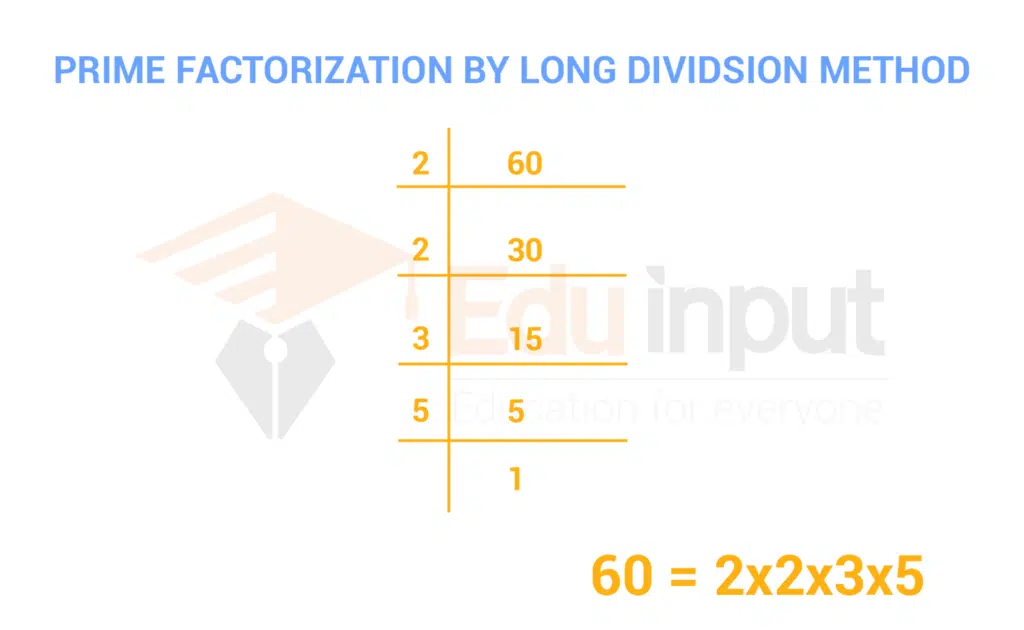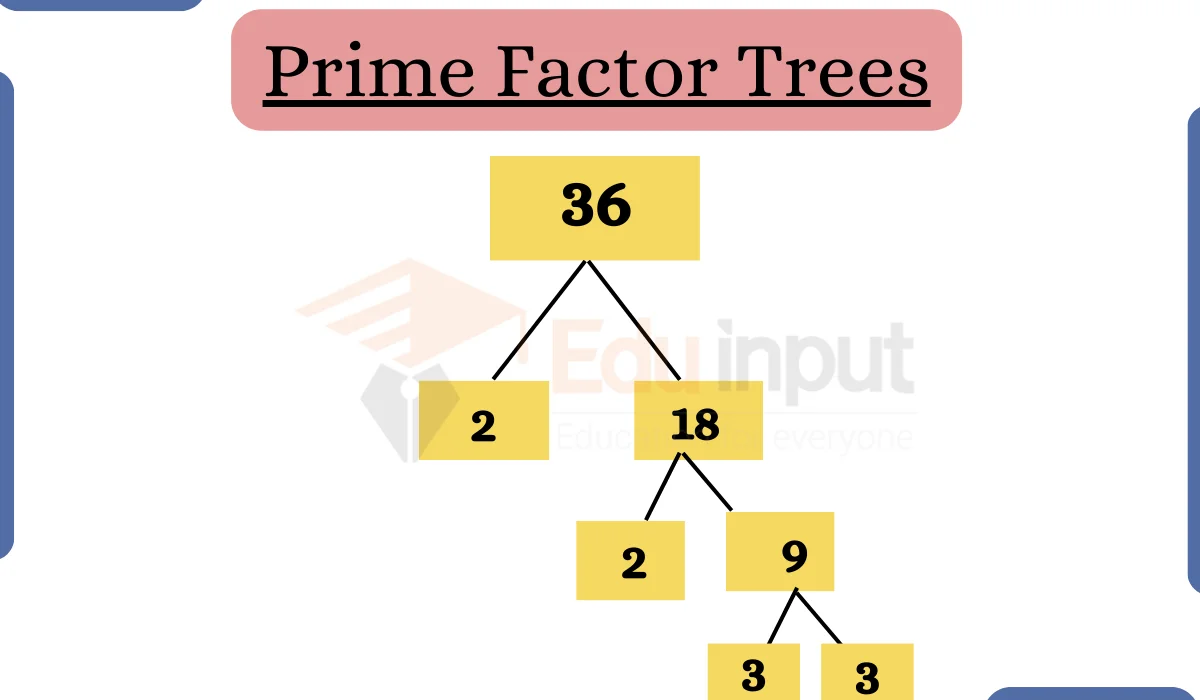How to Find Prime Factorization by Division Method?
There are distinct methods for the prime factorization of a number. The most common way that is used for prime factorization is given below:
- Prime factorization by factor tree method
- Prime factorization by division method
Prime factorization by division method
The division method can also be used to determine the prime factors of a greater number by dividing the number by prime numbers. Let us learn how to determine the prime factors of a number by the division method using the following example.
For example: Find the prime factorization of 60 with the division method.
Solution:
Step 1: Divide the number by the smallest prime number such that the smallest prime number divides the number completely. Here we divide 60 by 2 to obtain 30.
Step2: Again, divide the quotient of step 1 by the smallest prime number. S0, 30 is again divided by 2 and we obtain 15.
Step 3: Repeat step 2, until the quotient becomes 1. Now, 15 is not divisible by 2, so we take the next prime number which is 3. And 15 ÷ 3 = 5. Then we divide 5 ÷ 5 = 1. Since we get 1 as the quotient, we stop here.
Step 4: Finally, multiply all the prime factors that are the divisors. Prime factorization of 60 = 2 × 2 × 3 × 5







Leave a Reply